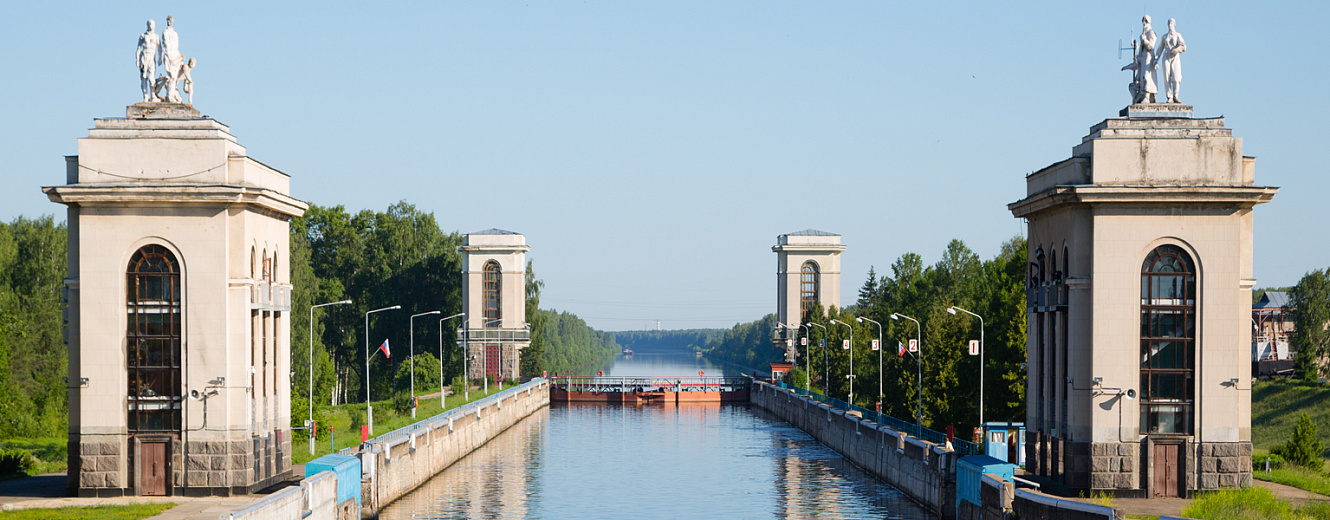Moscow Canal

If your journey with Vodohod starts in Moscow it means that it starts with Moscow Canal. During your trip, you’ll get acquainted with an interesting system of locks used for raising and lowering ships between stretches of water of different levels on river. What else should you know about Moscow Canal?
Many years ago Peter I had an idea to make a waterway from Moscow to the Baltic Sea, however, only at the beginning of the 1930s the idea of linking the Volga with the Moscow occurred again. The canal was created in unprecedented time, 4 years and 8 months, and it was put into operation on 15 July 1937. Its total length is 128 km, of which 19 km are taken up by reservoirs.
For short periods builders have erected 240 large structures including 11 locks, 11 dumps, 19 bridges, 3 river ports, a passenger terminal and other structures. Currently all activities conducted here are taking place due to the need to supplement the available water resources in the reservoir for eventual transfer to the Greater Moscow city water-supply.
Moscow Canal serves various purposes. Historically plagued by short water supply, Moscow by the 1930s urgently needed a link to a major water source. The channel made the water level much higher, which has enabled navigation, and new ports have been opened. The banks of the channel are a popular pleasure resort for Muscovites.
Moscow Canal is a canal in Russia that connects the Moskva River with the Volga River. It is located in Moscow itself and in the Moscow Oblast. With the canal, Moscow is connected to Russia's Unified Deep Water System, a large system of canals and rivers in European Russia, which created access to five seas: the White Sea, Baltic Sea, Caspian Sea, Sea of Azov, and the Black Sea.
In the shortest time, builders have erected a marvelous monument – one of the best and largest navigation canals of the world. Travelling with Vodohod is a great opportunity to see the power and the beauty of the world's advanced technology!

